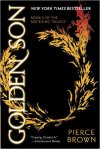 Are we Indie writers shooting ourselves in the foot, so to speak?
Are we Indie writers shooting ourselves in the foot, so to speak?
Today I’m running a promotion on Book Barbarian for Caught in Time. This is my first in series and I’m offering it free. Often the first of a series is the one that ad sites want. I did this to reach out to a pool of readers of science fiction who may be interested in my books. Discoverability is difficult for most Indie authors, and promotions are one easy way, but they cost. I chose Book Barbarian because it targets science fiction and fantasy and is at a reasonable cost. The top site is Bookbub where I recently ran into an article that was really a promotion piece, which raised some questions I wanted to ask.
Below is the last section from the piece I discovered on Flipboard that extols their site. Bookbub is considered the top ad site for books, difficult to qualify for, and very expensive. However, authors swear it’s effective. It’s the last sentence of the “article” that is causing me concern.
Book lovers are Obsessed with this Site. (Flipboard May 9)
By Bookbub.com
…”Book lovers have now become practically obsessed with this concept. In many cases, they’ve downloaded hundreds of books and saved hundreds of dollars using the service.
“I now have more books than I can read in a lifetime,” said Suzie Miller of Auburn, WA. She said she has downloaded more than 350 free ebooks using the service.”
As a reader, I use the service, and like Suzie Miller, (a real person?) I have downloaded more books than I will be able to read this year.
But is this a good thing for authors?
Your book gets downloaded, but may sit in a reader’s library for ages.
Or, maybe they read it and buy out the series.
I’ve had both things happen.
But I’m afraid authors are devaluing their hard work, and readers are not as eager to download the offerings as much as they used to, or buy books at retail. Why pay full price when you can get a similar book free or heavily discounted? Are we harming future revenue?
Am I right or wrong, or somewhere in between?
Do I, as an author, have a viable alternative?
No answer here. Just putting it out there.

What do you think of when you hear the word robot?
Probably something made of metal with hard edges.
Maybe not. Often I throw in interesting science pieces and this article on building soft robots, with space in mind, caught my eye. I wanted to pass it along.
…”The advantage of a soft robot is that it’s flexible and, in some ways, better able to adapt to new environments. Soft robots move in ways similar to living organisms, which expands their range of motion, perhaps making it easier to squeeze into a tight spot, for example.”
Also, probably easier to transport when weight is so much a factor.
…”By design, the actuator has chambers, or air bladders, that expand and compress based on the amount of air in them,” NASA said in the statement. “Currently, these two interns are operating the design through a series of tubes in the air bladders, allowing them to control the movement of the robot. By adjusting the amount of air in the chamber of the soft robotic actuator, the robot can flex and relax, just like a human muscle.
In particular, the interns are investigating four key properties of the actuators — mobility, joining, leveling and shaping — and how to use them in space exploration. Mobility refers to how the soft robot moves in its environment, while joining concerns how robots can link together (for example, to make a large temporary shelter). Leveling refers to how actuators can create a surface, such as filling in space underneath a lunar habitat, while shaping examines ways of adding strength to materials like dust shields.”
Once you hear the idea, it makes so much sense. Of course, I’m wondering about the computer components and how they operate the robot and the toughness of a material that can stand up against a space environment.
But NASA is working on it. Thinking outside the hard metal box.
 This week I’m talking about Sea of Rust by Robert Cargill. Mainly because I mentioned robots in the blog, and this story is all about robots.
This week I’m talking about Sea of Rust by Robert Cargill. Mainly because I mentioned robots in the blog, and this story is all about robots.
The story begins thirty years after the apocalypse and fifteen years since the murder of the last human at the hands of robots.
We’re extinct, and the world is dominated by an OWI or One World Intelligence that shares consciousness and is trying to upload all the remaining robots into its mainframe.
Enter Brittle, an independent robot trying to survive a wasteland that once was our Midwest. But its mind is deteriorating and body parts are losing function. The only way to replace them is by scavenging other parts from similar robots
So it’s a bit gruesome to start.
There are other solo machines wandering the wilderness, and they form a pack with Brittle, trying to escape assimilation.
If you can handle the grimness (think Madd Max), then the story is interesting from the robot’s point of view, and the interaction, almost human, of the robots that struggled to survive and evade assimilation makes for a worthwhile story.
And finally,
I want to give a shout out to Tabby’s fantastic book club. They were a warm and amazing bunch. I don’t think they expected someone who could talk as much as I did. Enthusiasm does that to me. So, thanks for your hospitality.
It was a fun way to meet new people… and show off my books.















































